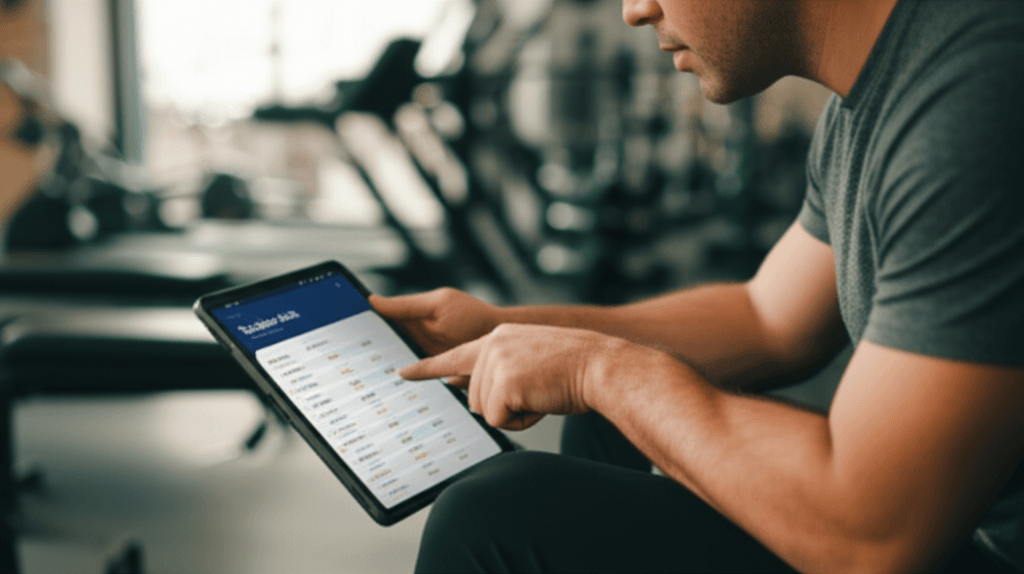For many, the question of how often to hit the gym is a persistent one, often met with conflicting advice. A personal trainer offers clarity, emphasizing that the “perfect” number of gym days isn’t a one-size-fits-all answer but rather a tailored approach that considers individual goals, fitness levels, and lifestyle. “People thank you for it,” one trainer suggests, highlighting the long-term benefits of a sustainable and effective routine.

The Guiding Principle: Consistency Over Intensity
While the allure of rapid results can lead some to overtrain, personal trainers consistently advocate for consistency as the cornerstone of any successful fitness journey. Sporadic, intense bursts of exercise can lead to soreness and even injury, whereas a gradual and consistent plan allows the body to adapt and recover properly. Building a healthy habit takes time, with research suggesting it can take an average of 66 days to form a new habit. Therefore, prioritizing regular, manageable workouts over infrequent, exhausting sessions is crucial for long-term progress and avoiding burnout.

Tailoring Your Gym Schedule to Your Goals
The optimal number of gym days per week largely depends on what you aim to achieve.
For Beginners: Building a Foundation
If you’re new to fitness or returning after a break, starting slowly and gradually increasing your activity is key. Beginners typically benefit from 2-3 sessions per week with a personal trainer. This frequency allows for focused guidance on proper form, learning foundational exercises, and building confidence in the gym. These initial sessions help establish good habits and allow the trainer to assess how your body responds to exercise.
For Weight Loss: Calorie Deficit and Movement
For those focused on weight loss, the primary objective is to create a consistent calorie deficit. While diet plays the most crucial role, regular exercise significantly aids the process.
- Optimal Frequency: Aim for at least 3-5 sessions per week, incorporating both cardiovascular exercise and strength training. Some studies suggest that exercising for 200 minutes or more per week is optimal for weight loss.
- Cardio Recommendations: Aim for at least 150 minutes of moderate-intensity cardio each week, which can be broken down into 30-minute sessions five times a week, or shorter sessions more frequently.
- Strength Training for Weight Loss: Strength training 3-4 times a week is effective for building muscle, which can boost your metabolism and assist with fat loss. Even 2-3 total body workouts per week for beginners can be beneficial.
For Muscle Building (Hypertrophy): Strategic Training
Maximizing muscle growth involves a balance of training frequency, volume, and recovery.
- Training Each Muscle Group: Current research suggests that training each muscle group 2-3 times per week may be optimal for most individuals. Some advanced lifters might even benefit from higher frequencies, while beginners can see significant gains with lower frequencies.
- Volume Considerations: The total number of sets per muscle group per week (volume) is a critical factor. For hypertrophy, 10-20 sets per muscle group per week are often recommended. This volume can be distributed across multiple sessions. For example, with a frequency of two times per week, you might do 5-10 sets per session, or 3-7 sets per session with a three-times-per-week frequency.
- Recovery is Key: Regardless of frequency, ensuring at least 48 hours of rest separating training sessions for the same muscle group is important for recovery and muscle adaptation.

The Role of a Personal Trainer in Determining Frequency
A personal trainer can be invaluable in crafting a personalized fitness plan, including determining the ideal gym frequency. They consider your goals, current fitness level, budget, motivation, and schedule.
- Beginner Guidance: For those just starting, 2-4 sessions per week with a trainer can help establish proper form, build habits, and provide accountability.
- Intermediate and Advanced Support: Intermediate gym-goers may thrive with 1-2 sessions per week for refining technique and overcoming plateaus, while advanced enthusiasts might prefer one session per week or bi-weekly check-ins to target specific goals.
- Hybrid Approaches: If time or budget is a constraint, a trainer can help design a hybrid approach that combines in-person sessions with independent workouts, providing guidance for “off days.”

Benefits Beyond the Physical
Consistent gym attendance offers a multitude of benefits that extend beyond physical appearance, impacting overall well-being.
- Improved Mental Health: Regular workouts release endorphins, which are “feel-good hormones” that can boost mood, reduce stress and anxiety, and even help manage symptoms of depression.
- Increased Energy Levels: Physical activity, including weightlifting, can leave you feeling energized for hours afterward by increasing blood flow and improving the body and mind’s efficiency.
- Better Sleep Quality: Consistent exercise contributes to better sleep patterns.
- Enhanced Social Connections: Gyms can foster a sense of community, providing opportunities for social interaction and support from fellow fitness enthusiasts.
- Reduced Risk of Chronic Diseases: Regular physical activity lowers the risk of chronic conditions like obesity, diabetes, and heart disease, and strengthens bones and muscles.

Avoiding Overtraining: When More Isn’t Better
While consistency is vital, excessive training without adequate rest can lead to overtraining syndrome (OTS). This occurs when the intensity and volume of exercise exceed the body’s ability to recover, leading to a range of negative consequences.
- Signs and Symptoms: Overtraining can manifest as increased risk of injury, decreased performance, persistent fatigue, hormonal imbalances (like elevated cortisol), a weakened immune system, sleep disturbances, irritability, and lack of motivation.
- The Importance of Recovery: Rest and recovery are essential components of any training program, allowing muscles to repair, rebuild, and adapt. Ignoring recovery can be counterproductive, leading to plateaus or even a reversal of progress.
Ultimately, the optimal number of days to go to the gym is a personal decision, best made with an understanding of your body, your goals, and ideally, guidance from a qualified professional. By embracing consistency and prioritizing recovery, individuals can unlock the multifaceted benefits of regular exercise, leading to a healthier and happier life.







